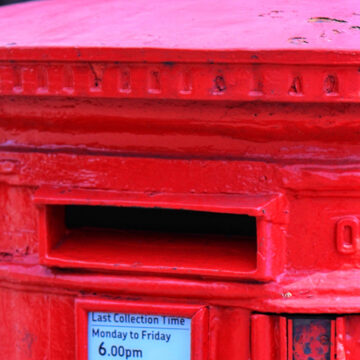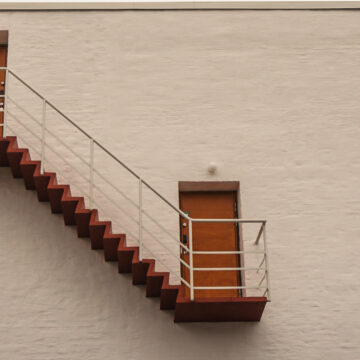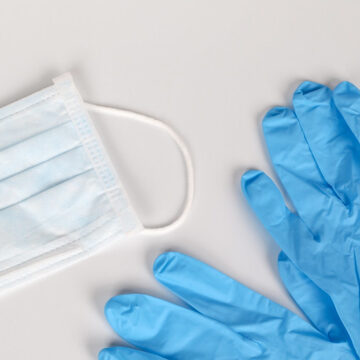Damp is a common problem in the UK.
In most house, damp is either:
- Rising damp, which occurs when moisture from the ground below the house travels up through the walls.
- Penetrating damp, which happens when moisture penetrates a building, usually due to disrepair or damage in its structure or exterior.
- Condensation dampness, which occurs when warm air with a high moisture content hits cold surfaces (like the windows). This type of dampness is due to the relationship between heating, ventilation and insulation in the house. It is more fully explained here.
Any of these types of damp can lead to mould which may affect your health, causing or worsening asthma and other respiratory issues, eczema or allergies.
It can also cause damage to the structure of your building, your furniture and your possessions.
There are some small actions you can take to help prevent damp and mould, but you can also ask your landlord to arrange for work to be done to the structure of your flat.
What does the law say?
Your landlord is responsible for keeping the exterior and structure of your flat in good repair. So, if the damp is caused by disrepair, they must fix it.
They must also ensure that your flat is ‘fit for habitation’. Mould or damp can make you ill, so they must do something about it.
- In England, your landlord must also ensure that your flat is ‘fit for human habitation’. So if the mould or damp is likely to make, or is making you ill, they must do something about it. The law is set out in the Homes (Fitness for Human Habitation) Act 2018.
- In addition, the Housing Health and Safety Rating System, introduced under the Housing Act 2004, lists potential hazards that landlords must address, including mould and damp.
- In Scotland, under schedule 4 of the Housing (Scotland) Act 2001, the first duty of the landlord is to ensure that the house is, at the commencement of the tenancy, wind and watertight, and “in all respects reasonably fit for human habitation” and to keep it in that condition throughout the tenancy. Where a house is subject to dampness, it does not meet statutory standard.
- The Housing Ombudsman released a report in October 2021 ‘Spotlight on Mould and Damp: It’s Not Lifestyle’ which makes 26 recommendations to landlords, urging them to be proactive and responsive to reports of damp or mould.
- Also see the ‘more advanced information’ section below.
Should I clean mould away?
The official advice is generally that you can keep mould away by regularly airing your home and avoiding activities that cause moisture.
On the other hand, there are also good reasons for not tackling the mould.
- Cleaning can release spores in black mould, which can trigger asthma and other respiratory issues.
- Leaving the mould to grow can help demonstrate that there is a problem which needs to be fixed. If you keep cleaning it away, it may be harder to prove that there is an issue.
- Do take plenty of photos so you have evidence if you decide to clean it away.
It is a good idea to get mould and damp seen to as soon as you can.
Your landlord must take action if the damp or mould is:
- Caused by an ongoing source of moisture, such as a leak or poor ventilation (eg the windows can’t be opened)
- Growing back even though you clean the area regularly
- Causing damage to your belongings or to the structure of the building
- Likely to cause health issues for those living in the flat
But it is worth alerting them to the problem as soon as you notice it: then it can be tackled before it causes wider problems.
What action can I take?
What to do first
Not sure what to write? You can copy this letter.
Meanwhile
There are a few things you can do to try and keep mould and damp at bay, but if they are being caused by structural issues, these should just be temporary measures while you await a fix from your landlord.
- Keep windows open and ensure good ventilation
- If possible, don’t dry your washing indoors. Use a washing line or communal drying area, or put an airer on your balcony
- Use a dehumidifier
- Don’t have a fish tank – these contribute to damp, and the larger they are, the more they contribute to the problem
- Move furniture a little way away from walls
- Ask your landlord to fit extractor fans in areas such as bathrooms or kitchens
If that doesn’t work
Here’s a letter you can copy.
- Or publicise the issue with a media campaign.
- If you’ve complained to your landlord and the issue has not been resolved, you could consider raising the matter with the Housing Ombudsman.
More advanced information
- The Homes (Fitness for Human Habitation) Act 2018 amended the law which was already set out in the Landlord and Tenant Act 1985, so you might need to look at section 9A to 10 of the 1985 Act for the basic detail that underlies the current rules.
- The Housing Health and Safety Rating System can be enforced by you through the Homes (Fitness for Human Habitation) Act 2018 or by Environmental Health unless your landlord is the local authority.
Even if your landlord is the local authority, there is a duty on the local housing authority (LHA) under the Housing Act 2004 to keep housing conditions in their area under review with a view to identifying any action that may need to be taken by them under the Act (section 3(1)).
Any deficiencies identified will contribute to a hazard under the Housing Health and Safety Rating System (HHSRS). This does not exclude the LHA’s own property. - In Scotland, social landlords (including local authorities and housing associations) have repairing duties under schedule 4 of the Housing (Scotland) Act 2001. The main duty is to ensure that the house is, at the commencement of the tenancy, wind and watertight, and ‘in all respects reasonably fit for human habitation’ and to keep the house in that condition throughout the tenancy. See more about landlords’ obligations in Scotland here.
Links to read
- Under One Roof (Scotland): Damp.
This advice is intended for flat owners, but is useful for tenants too.
Related guides


Guide
Cracks in the walls, ceiling or floors are always a concern – and might point to more serious issues.


Tools you can use
Your elected representatives, like MPs and Councillors, can help you with your housing issues. Here’s information on how to get in touch.


Tools you can use
Tips and letter templates to help you communicate with your landlord when there’s something wrong, or you want to find out more.


Tools you can use
If you have made a request to your landlord and you’re not getting results, then what can you do next to get things fixed?


Guide
Need repairs and not sure how COVID will affect the process? Here’s the latest advice.










